For a race as grueling as Unbound, the choice of equipment is arguably just as important as the training for the race itself. When building up the ultimate gravel race bike to handle the rigors of 200+ miles of Flint Hills gravel, there are countless important decisions that need to be made. In this week’s feature, I’ll walk you through the decisions and thought processes I went through as I was configuring this gravel dream bike.
A Stout GT-1
Here at Above Category, we have the great fortune of working with a number of extremely talented frame builders, all of whom bring their own unique set of skills and approach to the table. For this project, the Mosaic GT-1 seemed like a perfect choice since their bikes have been ridden very hard, across all surfaces, to great success for a number of years. It’s also always a pleasure working with Mark Currie at Mosaic, who will be lining up alongside me at the start line in Kansas. Since Mark has ridden Unbound before, his experience was invaluable as I went through the process of selecting the tubes, designing the perfect geo, and rendering the finish concept.

A race as tough as the Unbound 200 is incredibly demanding on both rider and bike. For this very reason, a solid, durable titanium frame seemed like the most obvious choice. When we were beginning the process of designing the frame, Mark suggested using Mosaic’s largest diameter titanium tubeset since I am a larger rider who puts a lot of strain on the frame. By utilizing these larger diameter tubes, Mosaic were able to build an extremely stiff and responsive bike ready to take on the all-day race effort in Kansas.
Mosaic offers two different gravel framesets, the GT-1 All-Road and the GT-1 45. The All-Road version of this tried and true frame platform has clearance for up to a 38c tire, while the GT-1 45 boasts increased clearance for tires up to 45c. Due to my size and how I tend to ride my gravel bikes more like their flat-bar, dual-suspension cousins, I knew the larger tire clearance version would be the right option. The GT-1 45 was the perfect choice!
As a 6’5” bike racer, my position on the bike is not the most ‘typical’, therefore custom geo made a lot of sense for this bike. Especially given the duration and difficulty of the race. After going back and forth with the team at Mosaic a few times, we settled on what looked like the perfect specs for this type of race effort. I typically run around 150-160mm of drop and 690mm of reach, but for this bike I opted for a more consverative 140mm drop and 670mm reach to make the position more manageable in those final long hours on the course.
A Custom AC Fade
As a full-on race bike, the frame cried out for a loud, noticeable paint job. The Mosaic ‘Tri-Fade’ is not a finish option that we have done many of here at AC, but we’re thrilled with how this one turned out. I love the clean look of the ‘Knockout’ finish Mosaic also offers, but after designing a race kit featuring our beloved AC colors (navy, orange, and white), it only seemed fitting to have a matching ‘Tri-Fade’ on the frame.
The folks at Spectrum Powderworks, Mosaic’s own in-house paint facility, once again knocked this one out of the park. Their work is truly fantastic, especially when it comes to fade paint jobs.
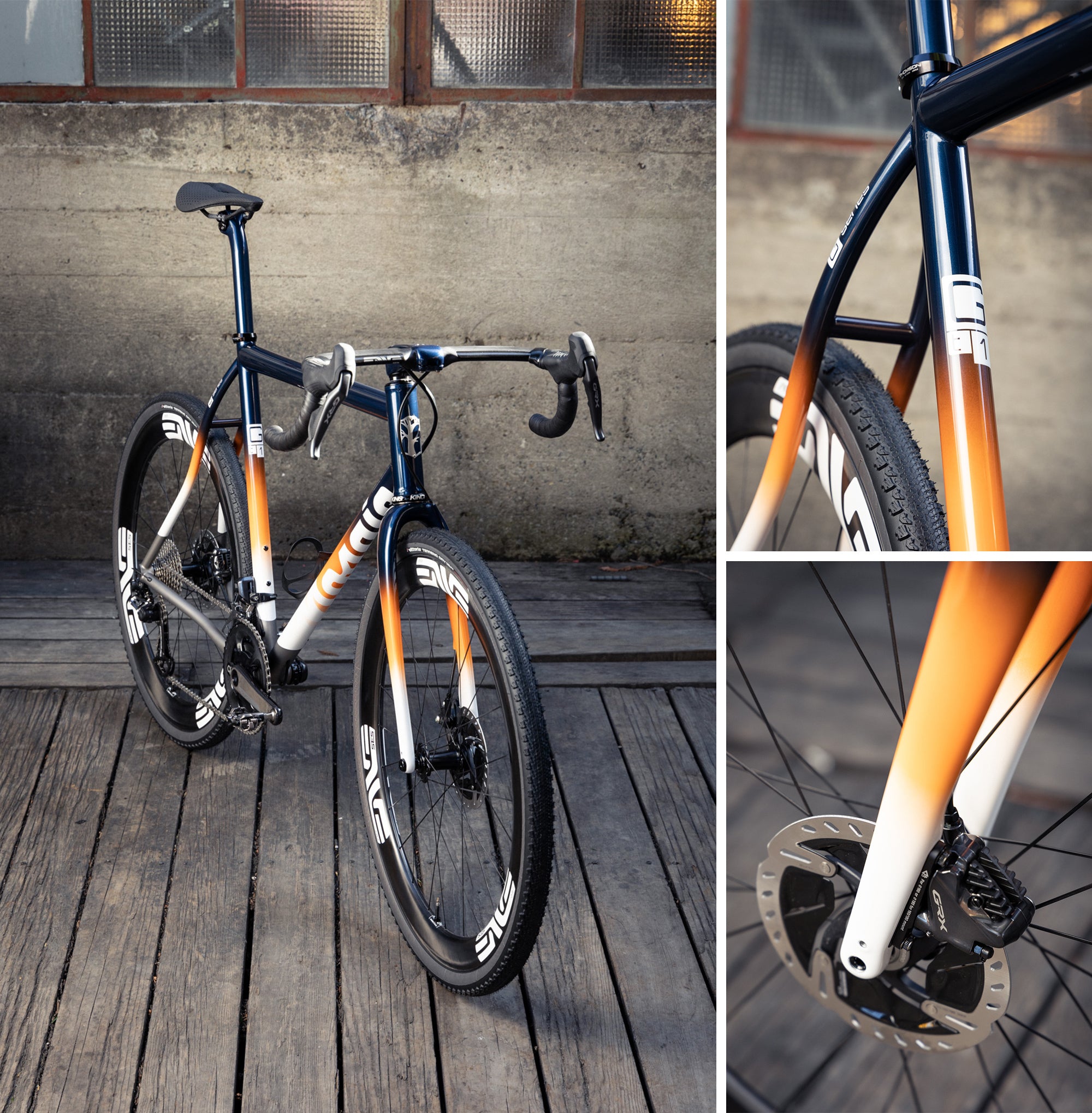
The Di2 Dream
For the drivetrain components, I chose to go with the Shimano GRX di2 groupset. Given the profile of the course in Kansas and how this bike is being built specifically as a gravel race rig, I opted for tighter gear ratios that will enable me to continue putting out power while riding fast in a group setting. In Kansas I will be running a 2x setup, with Dura-Ace 50/34 chainrings on a Quarq dFour power meter and an 11-32 cassette. The power meter will be an absolutely crucial bit of tech on the bike and will play an instrumental role in pacing my efforts throughout the entirety of the race.

One of the elements of this groupset I am most looking forward to is the GRX di2 shifters. Not only will they shift crisp, smooth, and fast every time, they will also be nice and comfortable as the hours tick by. Shimano designed this groupset specifically for the rigours of gravel riding in terrain similar to what I will encounter at Unbound. While the levers’ aesthetics might not appeal to everyone, I found it hard to not love them after spending many hours riding them on a previous bike.
For the brakes I chose a set of the sleek, black Dura-Ace brake calipers. I love their look and the stopping power they provide. Especially in this 160mm/160mm configuration.

Rolling Smooth
When racing, no matter the distance, discipline, or conditions, every watt counts. Even more so during a race that is 206 miles long. Thankfully for me, I have the extremely smooth, seemingly frictionless ceramic bearings from our Danish friends at CeramicSpeed installed throughout the bike. For this ‘full gas’ race bike, we have installed the entire CeramicSpeed package, all the way down to the rebuilt and upgraded Shimano XTR pedal bearings.

This Mosaic GT-1 gravel race bike features a number of extra durable, smooth rolling bearing upgrades courtesy of CeramicSpeed. To keep the cranks spinning freely and without noise, I opted for their coated bottom bracket. At the rear end of the bike, I chose to go for the full friction-minimizing coated OSPW system. While this isn’t a very common sight on a gravel bike, the watt savings it provides are substantial. And with the potential for mud and dirt to gunk up the drivetrain while racing off-road events like Unbound, I’m keen to keep the drivetrain rolling as smoothly as possible.

The other big contributor to drivetrain friction is the chain itself. For race day in Kansas I will be replacing the current chain with one of CeramicSpeed’s UFO Coated Dura-Ace chains. The UFO coating will ideally keep the chain running smoothly and efficiently all day as I make my way along the course. The final bearing upgrades this GT-1 received are the bearings in the Enve hubs. We recently got a special tool from Enve that enables us to remove all the bearings from a stock Enve hub and replace them with a full set of CeramicSpeed bearings for that buttery smooth and long lasting roll we know and love.
Enve's Best
Seeing as we are teaming up with our friends from Ogden, Utah for the event itself, it seemed only fitting that the bike was also fully outfitted head-to-toe in Enve products. Starting up front at the cockpit, I chose the Enve Aero Handlebar in a 44cm width. This bar offers a slight flair, lots of different hand positions, and a super aerodynamic profile. This aero bar can also be used with a set of Enve clip-on aerobars which I will be running while racing in Kansas. I know these are controversial and far from the coolest looking addition to the bike, but the reasoning behind this choice is twofold; I wanted to be as aero and efficient as possible while maximizing my options for body position. With the race being so long and physically demanding, having additional positions on the bike will help prevent cramping and fatigue setting in earlier than expected. Isn’t aero supposedly everything these days..?

Along those same lines, I also chose the more aerodynamically optimized wheelset for this build. When it comes to gravel wheels, Enve has some incredible options. They have put tons of time and effort into designing a variety of wheel options for a variety of terrain. While I love the lightweight compliance of the G23s and the all-around stability of the 3.4 ARs, I couldn’t help but be drawn to the more aggressive profile and aerodynamic advantages the 4.5 ARs offer. And when paired with some white decals, these wheels simply look fast standing still! Unbound is an especially long race and there will inevitably be extended stretches of solo miles, possibly into strong winds, too. For this reason, many of my preferences for this build lean toward the more aero-optimized direction.
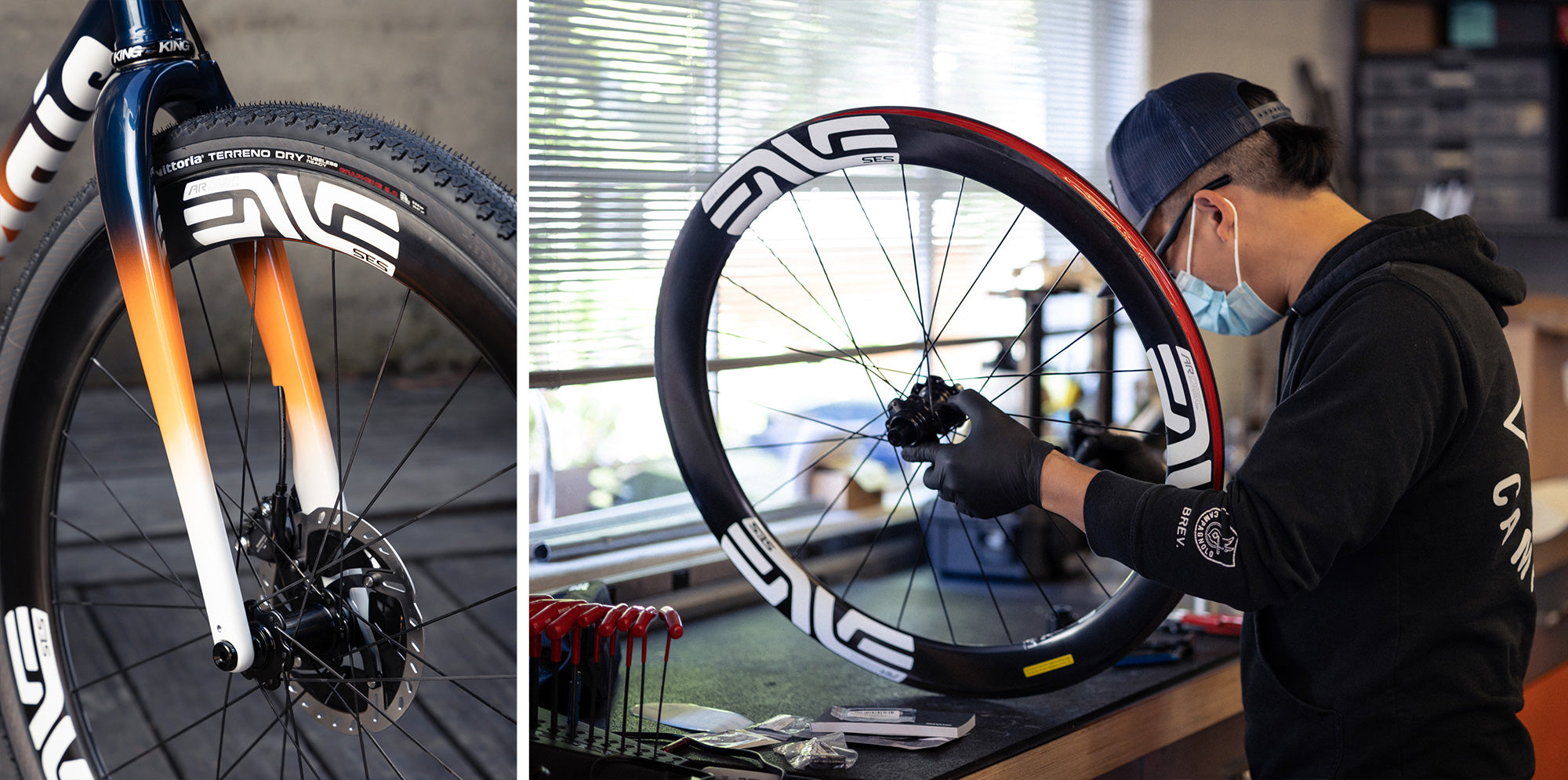
To tie the whole Enve package together, I had Mosaic continue the tri-fade paint job out onto the Enve Aero Stem and Seatpost. This is accented with two Enve Carbon Bottle Cages and two rolls of the, very comfortable, black Enve Bar Tape.

Terreno TNT
On terrain like what is to be expected amongst the Flint Hills of Kansas, a good set of tires could be the difference between contending for the race win and a 20+ hour epic battle against the equipment. In the last few weeks, I have had some pretty poor luck with my tires, leading me to become increasingly paranoid about mechanical issues while racing in Kansas.

As I’ve discussed Unbound with more and more people, one common topic is tire choice and being prepared to puncture. I have been told repeatedly to plan to flat many times and allow myself to be pleasantly surprised if this is not the case.

Provided it will be hot and dry at this year’s event and not a slippery mudfest, I will be running the Vittoria Terreno Dry gravel tires in 700c x 38c. Due to the rugged nature of the gravel roads in the Flint Hills region of Kansas, I opted for the more durable TNT casing version of these incredible tires. I also have an additional trick up my sleeve courtesy of the folks at Vittoria - their Gravel Air Liners. These will help prevent pinch flats and allow me to run lower pressures. These liners also reduce the volume in the tire too, which makes the ‘spring rate’ of the tires more progressive as they approach the point where they will bottom out.

Off to the Races
I hope you have enjoyed going through all the details on this special bike with me! Stay tuned for our next Unbound related article where I will breakdown the event and share my experiences at the race in Kansas.
If you are curious about the process for building up your own gravel dream bike, please don’t hesitate to reach out!


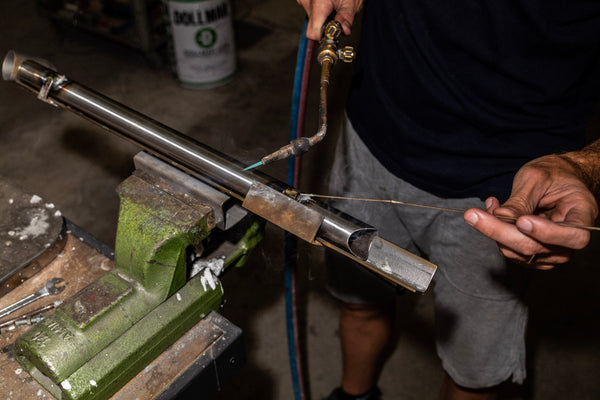
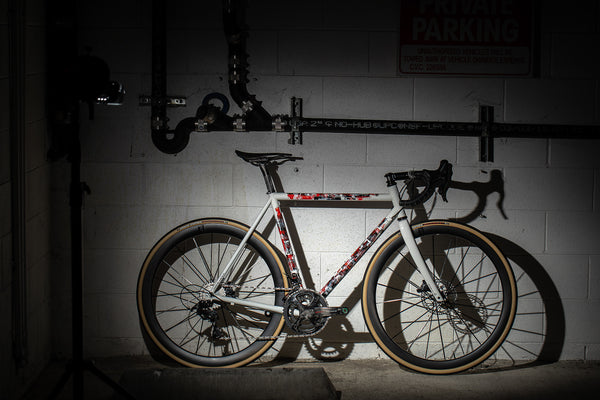
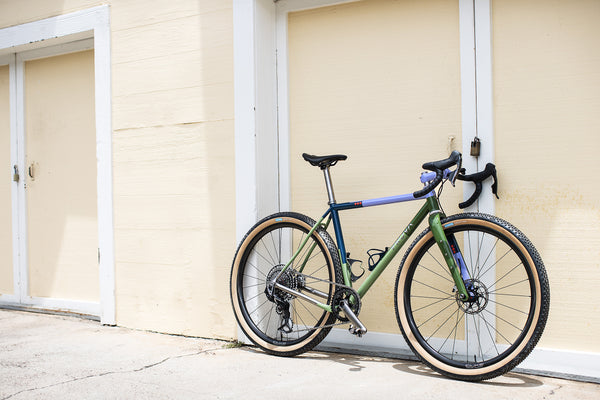
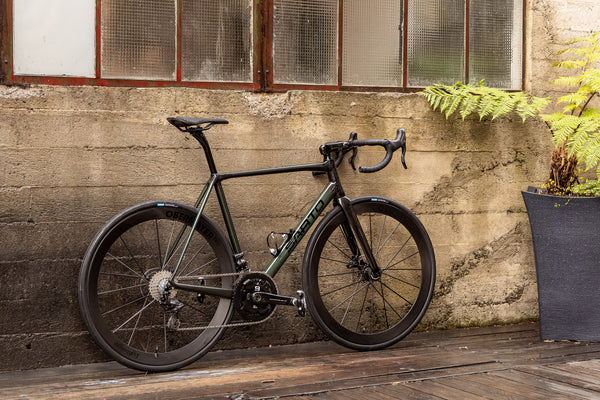






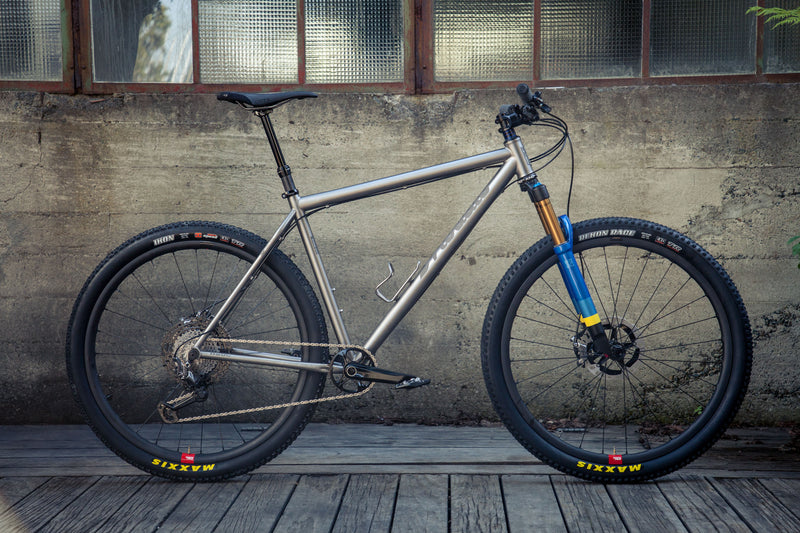
Back to Journal